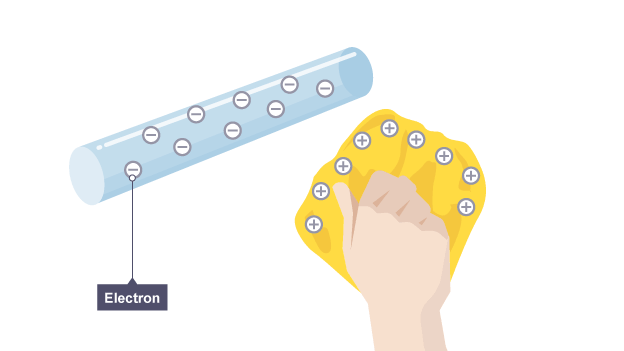Can charge even flow through electrical insulators?
I think insulators don’t allow the passage of charge.
The key says E.
Can charge even flow through electrical insulators?
I think insulators don’t allow the passage of charge.
The key says E.
Hi!
The third statement should be fine, since I believe it counts as charging by friction.
I think the trick is the way they’ve worded it, they can be charged (by rubbing, induction, etc.) - even if the charge does not flow through them.
When insulating materials rub against each other, they may become electrically charged. Electrons, which are negatively charged, may be ‘rubbed off’ one material and on to the other. The material that gains electrons becomes negatively charged. The material that loses electrons is left with a positive charge.
For example;

When a polythene rod is rubbed with a duster, the friction causes electrons to gain energy. Electrons gain enough energy to leave the atom and ‘rub off’ onto the polythene rod.
If the rod is swapped for a different material such as acetate, electrons are rubbed off the acetate and onto the duster.
Both the rods and the duster are made of insulating materials. Insulators prevent the electrons from moving and the charge remains Static and Static Charge does not involve moving electrons.
I hope this helps, and please correct me if I am wrong! ![]()